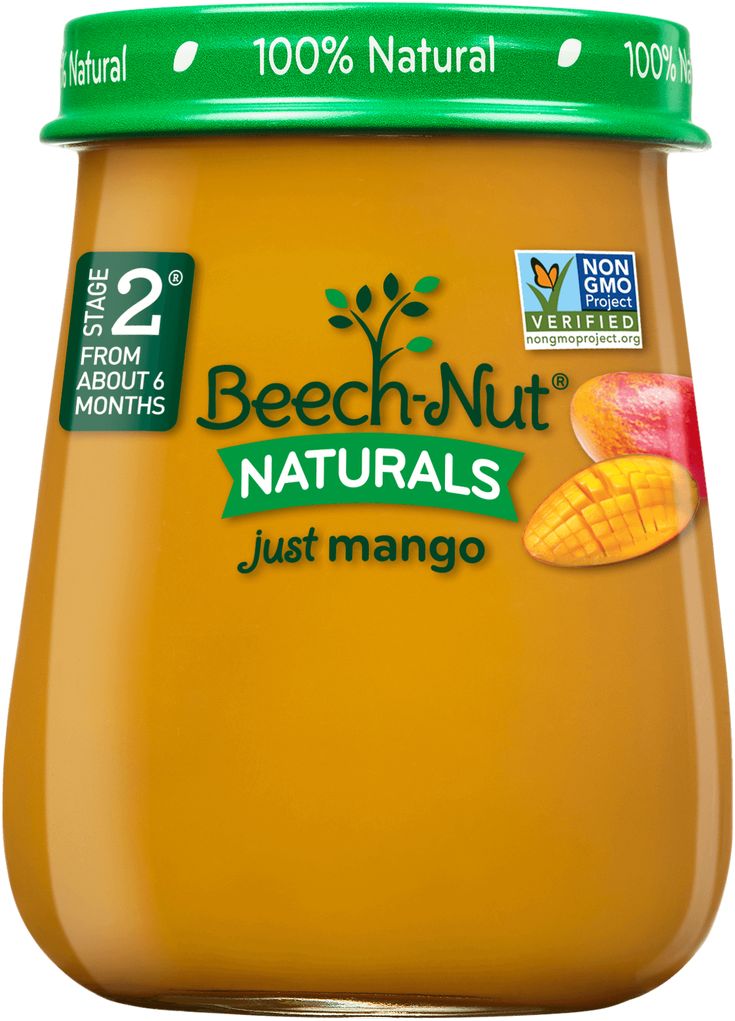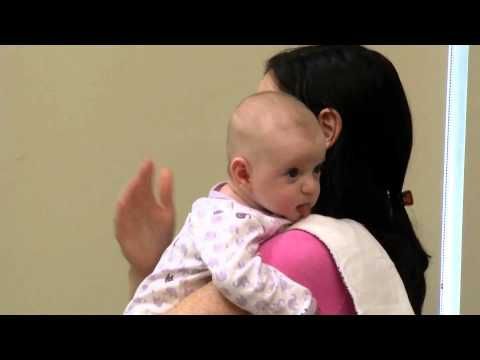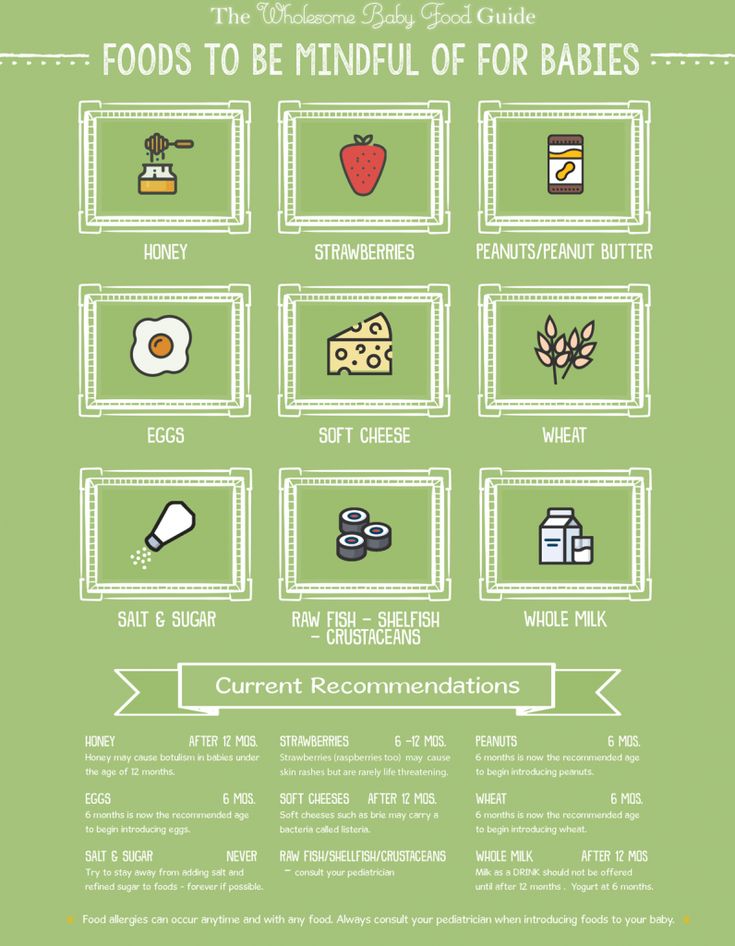Feeding baby with metal spoon
What Age Can Babies Use Metal Cutlery?
Mealtime with babies and toddlers is…
… an adventure.
There’s a lot going on. A lot of chaos.
Food is flying everywhere. Kids are yelling. Or singing. Or throwing things.
Sometimes their favorite cup is dirty. Sometimes you forgot to give them their juice.
And sometimes you’re out of plastic kid-friendly silverware.
If you’re like me in those situations, you might be wondering when it’s OK and what age babies can use metal cutlery (forks and spoons).
Most experts agree that you shouldn’t start off feeding babies and infants with metal spoons and cutlery.
They’re not necessarily all that dangerous, but it’s better to wait to introduce metal spoons and cutlery until:
- Your baby isn’t biting everything in sight
- Your baby has pretty good motor control (and won’t hit or poke themselves with the metal)
- Your baby has made a lot of progress eating with utensils (metal cutlery can slow this down)
Most parents wait until around 18 months or older to introduce “adult” spoons and forks.
Let’s dive in a little deeper to see why.
Why can’t babies use metal spoons?
There are a couple of reasons most doctors and parenting experts agree that infants shouldn’t use metal spoons when they’re just beginning to eat solids.
Metal is hard on their teeth and gums
For starters, really young babies haven’t yet learned how to extract food off of a spoon in a graceful way. They’re likely to gnaw and chomp at it to get the food off (or because they do that with just about everything they see).
And you can’t blame them! Mouthing is how babies interact with the world when they haven’t learned how to use their hands super well yet.
The metal of a spoon, fork, or spork is going to be too hard on their sensitive gums and budding teeth. It could be uncomfortable, or worse, cause cuts and bruises.
Metal is extremely temperature sensitive
Have you ever left a spoon in a bowl of hot soup too long?
How did it feel when you tried to take a taste? Not great, right?
Metal can very easily become really hot or really cold depending on its contact with certain kinds of food.
Now, it’s not very likely that you’re feeding your young baby anything that’s too extreme, temperature-wise, but any fluctuation that baby doesn’t like could cause them to dislike the utensil-experience altogether.
And you wouldn’t want to slow down their progress learning how to eat solid foods.
Plus, why risk it? Plastic and rubber spoons don’t carry any risk, really, of overheating or becoming too cold.
Metal is heavier/harder
This is a little redundant of point number one, but adult-style cutlery can carry some serious weight sometimes.
It probably won’t be too heavy for a baby to lift and eat from, but if they were to swing it around and clonk themselves on the head or in the eye, it would probably do more damage than a light plastic or springy rubber spoon.
That’s why motor control is an important milestone to keep an eye on when trying to decide if you should switch to metal or silver cutlery.
Is your baby likely to hit themselves with it accidentally? If so, stick with rubber and plastic!
When to switch to metal or silver cutlery for babies & signs to look for
There are a couple of signs to look for that your kid might be ready to make the switch.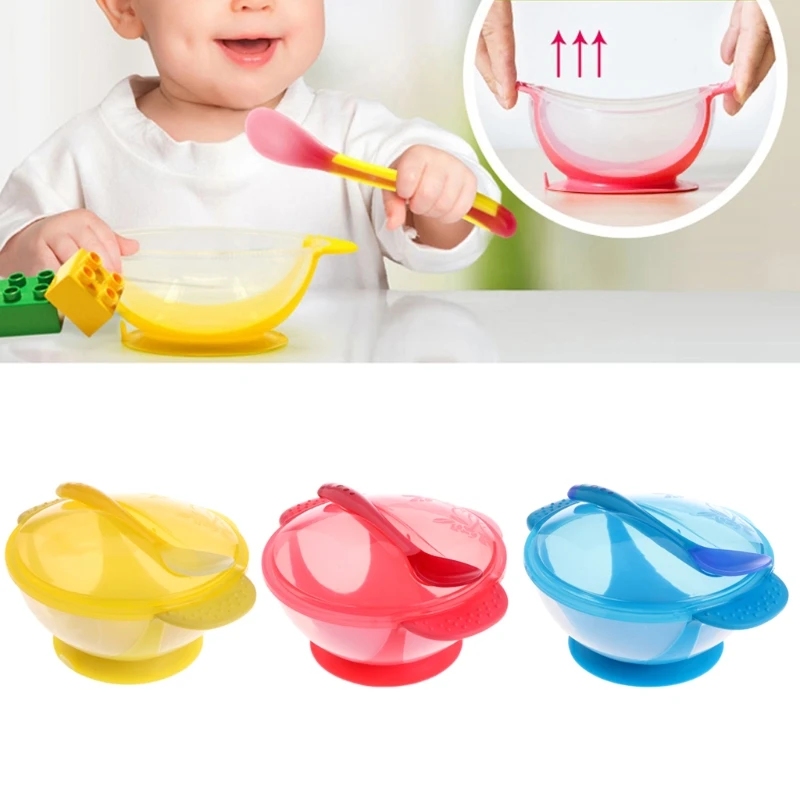
Most parents wind up letting their babies or toddlers use “real” spoons and forks somewhere around 18 months or so, depending on:
- How good they are at self-feeding: If they’re pretty accomplished, that’s a good sign you can make the switch. If they’re still learning, they might not like the feel of the metal and it could cause them to backtrack.
- What kinds of food they’re capable of eating: If your kid is old enough to eat certain tougher kinds of food with a fork, he or she might need a metal fork that can properly stab. But again, watch the motor control! Metal forks can be quite prickly, so be sure that you trust your toddler to wield one.
- How often they bite or mouth things: The thought of biting into a metal spoon literally sends shivers up my spine. Imagine what it could do to fragile young teeth! If your kid is still biting things to feel them out, better stay with plastic and rubber for a while longer.

When do all of these things tend to align? Well, someone started an informal poll over on BabyGaga and somewhere around 80% of the parents who responded said they let their kids start using metal cutlery anywhere from 12-24 months.
So that gives you a pretty good ballpark of what other parents are doing.
But you should use your own judgment based on your own comfort level.
There’s really no rush to switch to metal cutlery. If you’re out at a restaurant and all they have is metal, it’s probably not going to be the end of the world to use it once in a while.
But when you’re home, you should just stick with your kid’s plastic or rubber cutlery for as long as you and they want to.
Plastic vs rubber vs wood cutlery for babies
So if metal is out before your baby is around a year old, which material should you use?
Which kinds of spoons are best for babies learning how to self-feed?
Plastic, rubber, silicone, and even wood are all fine choices.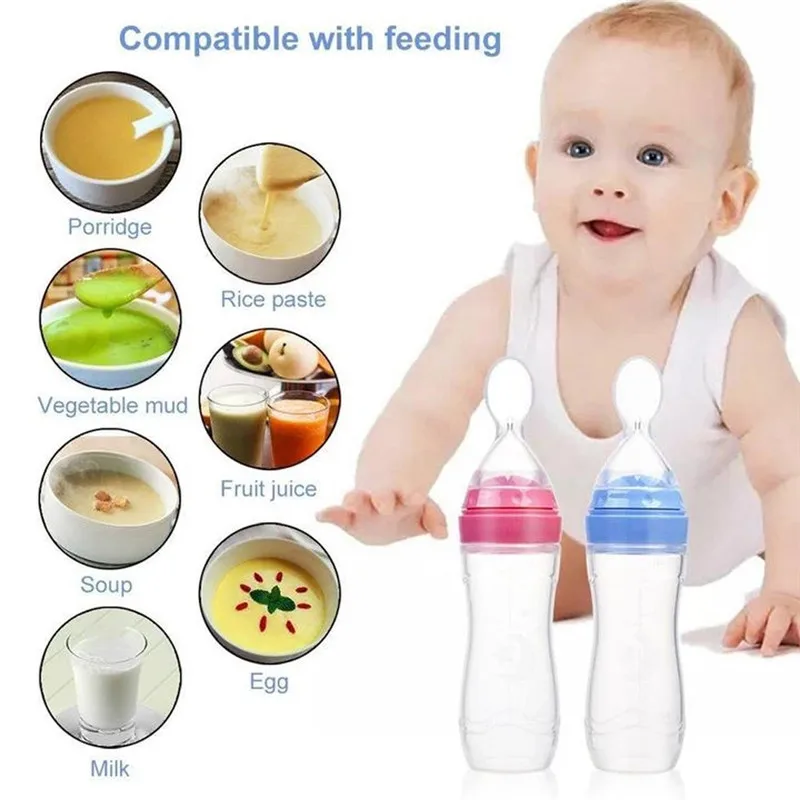
The key things you want to look at are:
- No sharp edges: Sometimes, hard plastic forks, sporks, and even spoons can have firm, pointy edges. I’d steer clear of this for young babies until they learn their way around cutlery a little better.
- No splintering or loose pieces: Wood and rubber/silicone options are great, just be sure they’re not too heavily worn to the point of splintering or pieces falling off. This is really dangerous for obvious reasons. This isn’t as much a concern when buying new silverware, but if you’re inheriting hand me downs or shopping used, be on the lookout.
- BPA free: If you go with plastic cutlery for your baby or toddler, make sure it’s BPA free. The concern over BPA levels may be slightly overblown, according to Mayo Clinic (they write that BPA is safe in very low levels), but it’s a good idea to play things safe when it comes to infant safety.
- Dishwasher safe: How do you clean and sterilize baby spoons? Make your life a heck of a lot easier and get baby cutlery that you can throw in the dashwasher! That way, you know it’ll come out completely clean and sterilized and you won’t have to worry about the quality of your handwashing.
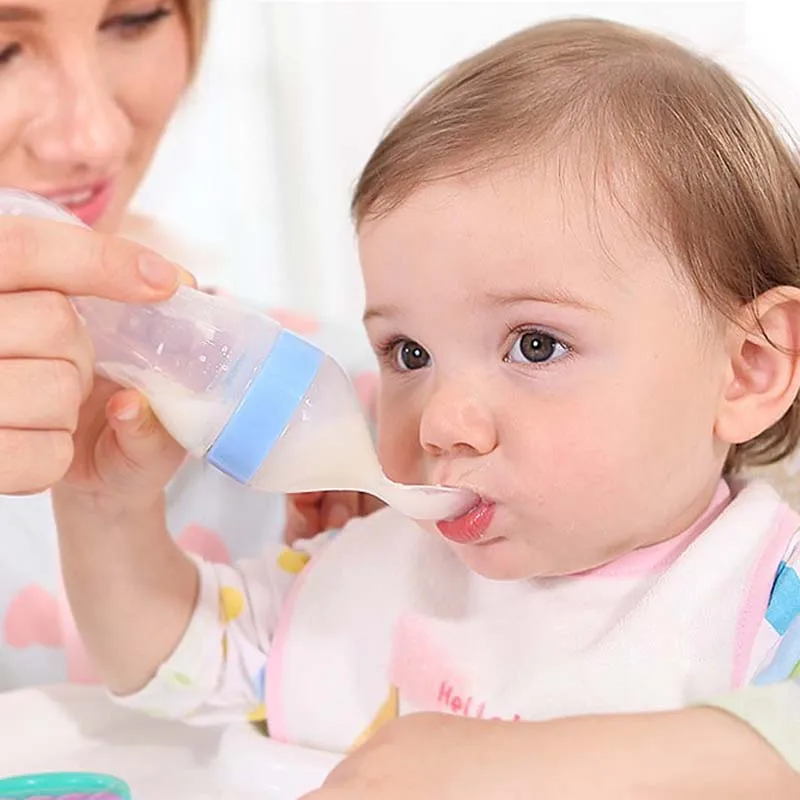
What are some of the best spoons for babies?
There are all kinds of wild new inventions out on the market when it comes to baby cutlery.
There are self-feeding spoons that supposedly can’t spill, baby spoons with loop handles, and all sorts of interesting innovations.
For my money, though, I think you’re better off just keeping things really simple and getting a bunch of relatively inexpensive, simple plastic, soft-tipped spoons.
We got an absolute TON of use out of these super basic Munchkin spoons when our daughter was little.
I loved them because they:
- Come in lots of cool colors
- Are pretty inexpensive to stock up on a ton of them (so you’ll never run out)
- Are dishwasher safe
- Are BPA free
You can check out the price and more reviews of the Munchkin Infant Spoons on Amazon right here.
If you ARE ready to switch to metal cutlery with your toddler, I’d probably start off with something like this kids’ silverware set right here on Amazon that has rubber-coated handles.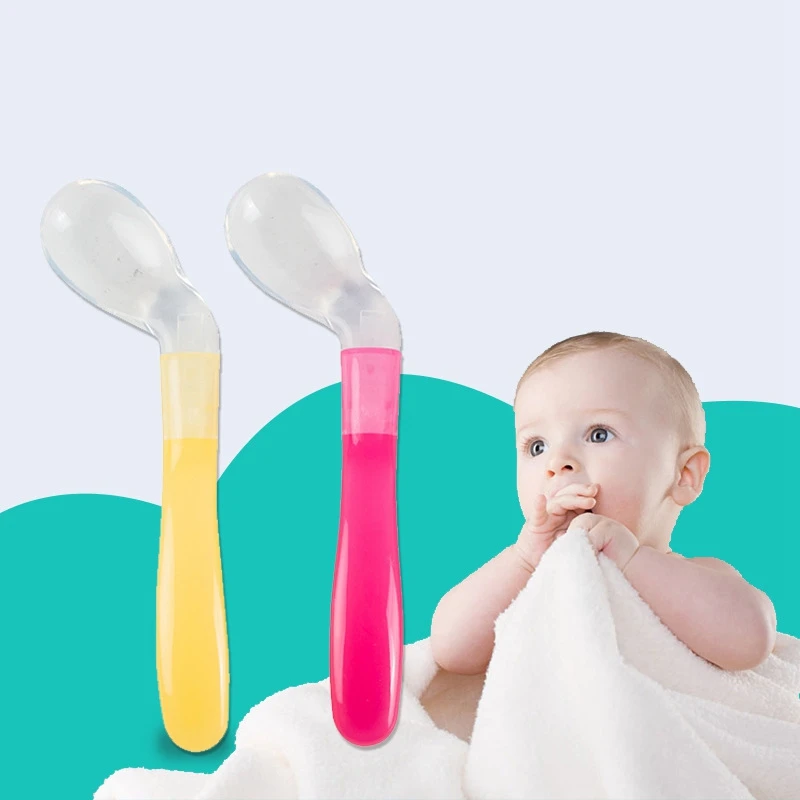
It’s a nice halfway point that should be a little safer and more comfortable for kids than just regular, adult silverware.
Wrapping Up
There’s not really an exact age that you’re supposed to switch your kids over to metal cutlery.
But most parents tend to do it once their kids are a year old or slightly older.
However, there’s no rush! If you want your kids to keep using plastic forks and spoons until they’re 3 or 4, there’s no reason to change things up. Metal cutlery doesn’t have any real advantage over kid-safe stuff except that maybe it’s more easily available when you’re eating out at restaurants.
Is your baby or toddler ready to switch? It all comes down to:
- What they’re eating
- How well they’re eating
- Motor control
- Mouthing/biting tendencies
Again, if you’re in doubt, just hold off on the switch for now. There’s no reason to rush things.
I hope this helps, parents!
Silver Spoon for Baby Vs.
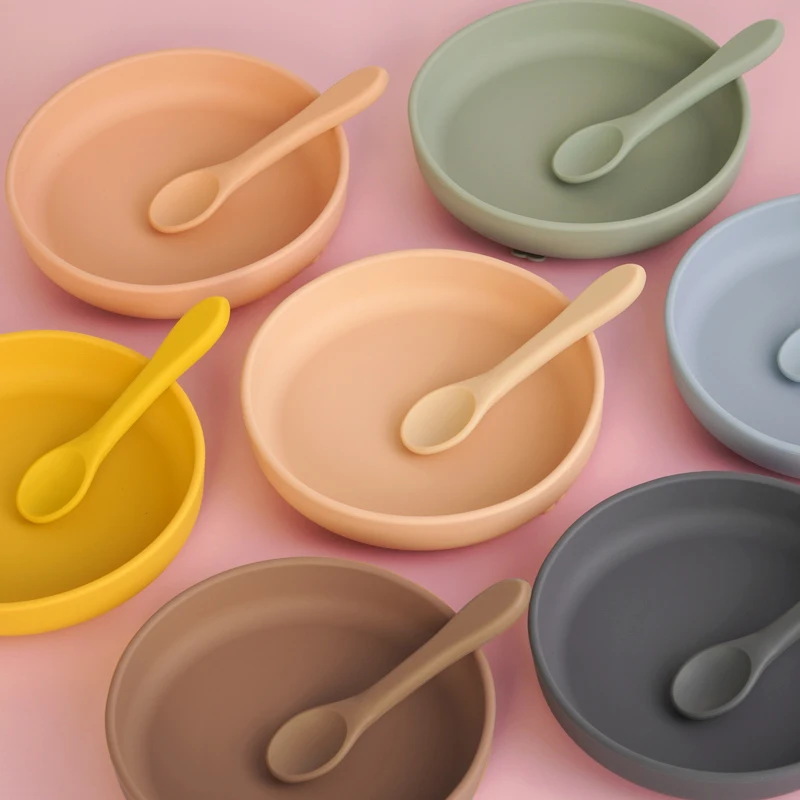 Other Materials
Other MaterialsOne of the precious moments in raising your children is seeing them pick up their own spoon and eat independently. It can get messy, but nothing compares to your happiness when you see your children grow and develop properly. So aside from ensuring you give them healthy foods to promote their overall health, the tools they use to eat should also be compatible with their age.
So does it matter if your kids use a metal or a plastic spoon? In this article, we’ll finally answer the debate between plastic and metal spoons and find out which one is the safest for your babies to use.
Are Your Babies Ready for Metal Spoons?
When shopping for baby products, it’s a common sight to see a variety of baby-friendly utensils, such as those made from plastics, wood, and metal. Take a closer look at the silver baby spoon and fork set to know if it’s still too early to introduce your little ones to silverware.
Metal Is Hard for Babies Who Are Just Starting to Eat SolidsWhen you transition your kids from milk to solid food, they are still trying to learn and get used to the different textures you give them. If you notice, babies will chomp down anything you give them because they can’t tell which is food and which is the spoon. That’s normal for babies, especially when they still can’t use their hands to eat.
If you notice, babies will chomp down anything you give them because they can’t tell which is food and which is the spoon. That’s normal for babies, especially when they still can’t use their hands to eat.
Even if these spoons are small and made for kids, chewing on hard metal can be uncomfortable to their gums and teeth. Other situations can lead to cuts and swelling, making your kids feel irritated and lose their appetite.
Metal Utensils Have More Weight Compared to Other MaterialsYour kids are starting to grip things but aren’t strong enough to hold heavy objects. It goes the same for their cups, spoons, and forks. They will have a harder time learning how to pick up the spoon and putting food in their mouth if they can’t use it properly in the first place.
If your babies can pick up metal utensils, it can still be dangerous for them. Little kids are playful and like to swing everything they touch. They can accidentally hit themselves in the eyes or the head, not to mention the sharp points of forks.![]() So, it’s better to go with rubber or wooden utensils in the meantime.
So, it’s better to go with rubber or wooden utensils in the meantime.
Have you ever experienced putting a spoon in your mouth that’s sitting in a hot bowl of soup? The experience is painful and very uncomfortable. Some even experience burns on their lips and mouth. Imagine if this situation happens to your kids. It will be a traumatizing experience for them. It will either make them lose interest in mealtime or refuse to use utensils.
It’s also the same when a metal spoon is too cold. Extreme temperatures that your babies are unaware of can scare them, so be careful when using a baby silver cup spoon and fork set for their mealtime. If they don’t like the experience, it will only make the transition to solid food slower and harder.
When Are Kids Ready for Metal Spoon and Fork?
Most doctors recommend metal cutlery for kids 18 months old and above.![]() At this age, your kids have better motor skills to switch to metal utensils. There are also other observable signs you can see to tell if your kids are ready.
At this age, your kids have better motor skills to switch to metal utensils. There are also other observable signs you can see to tell if your kids are ready.
- Observe how well your kids can feed themselves. If your kids have no problem putting food on their spoon to their mouth, there are minimal spills, and they are not wildly swinging their utensils, this is a good sign that they are ready to switch on metal spoons.
- Observe what type of food they often eat. Switching to silverware can depend on the type of food your kids often eat. For example, if your kids can consume tough meat, maybe it is best to let them use a fork instead of their hands. Letting them use the proper utensils not only help them eat better but also teaches them basic table etiquette.
Other Materials: Silicone, Rubber, Plastic, Wood
Almost 80% of parents prefer other utensils over baby silver cups and spoon sets. They wait until their kids are two years of age before switching to metal.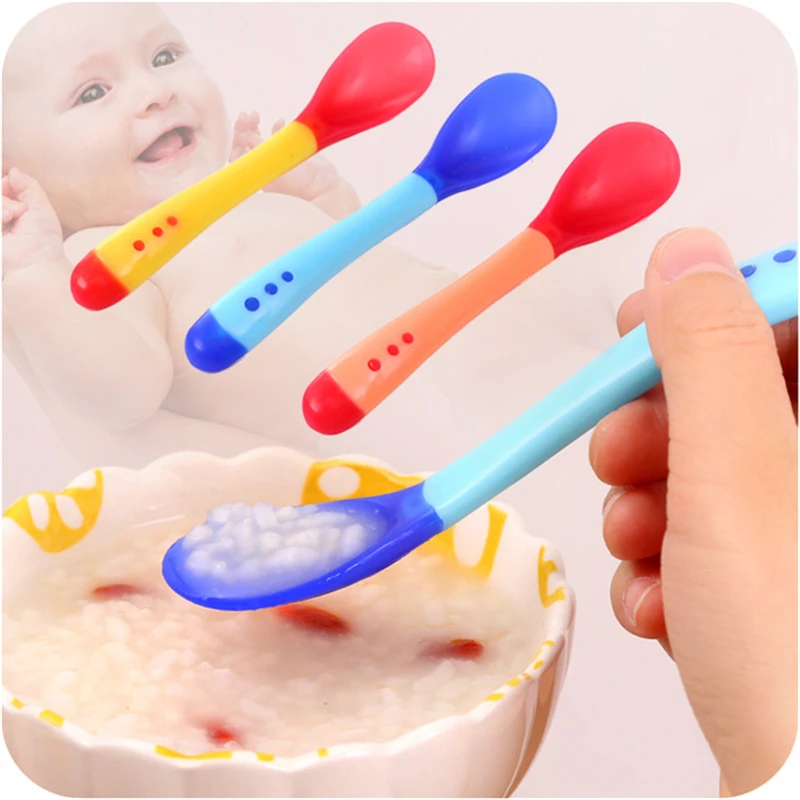 Don’t rush them to eat the way adults do. There are benefits of letting your kids use baby-friendly utensils until they are fully ready.
Don’t rush them to eat the way adults do. There are benefits of letting your kids use baby-friendly utensils until they are fully ready.
- Silicone and rubber are the safest for your babies because they don’t have sharp edges and are soft. This way, your babies can chew on them without risking mouth wounds and cuts.
- These spoons are also less prone to chemical reactions. On the other hand, metal spoons can react with your cleaning agent or even ingredients from the food, which can harm your babies.
- These spoons are cheaper compared to baby metal spoon and fork sets. However, your kids will not use it for a long time and will eventually switch to metal, so start with a safer choice that also fits within your budget.
- Baby-friendly spoons made from wood and silicone are toxin-free. Your babies can use them as teethers to relieve pain from their sprouting teeth.
Get Your Baby Spoons at Ashtonbee!
If you’re looking for the perfect spoons for your baby to transition to solid foods, Ashtonbee has the perfect one for you.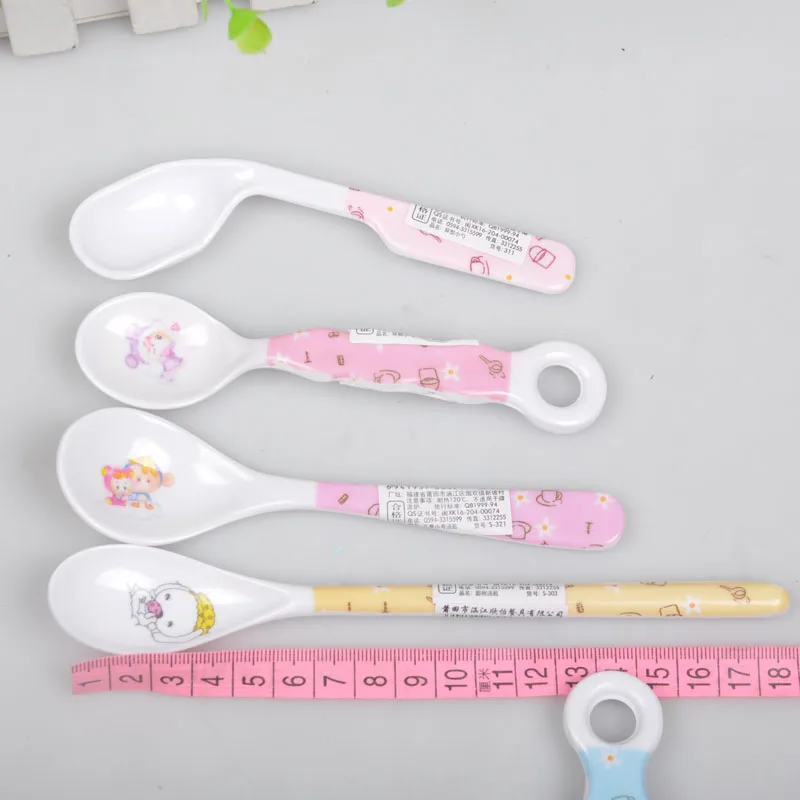 It’s guaranteed safe for your little ones and come with features to cater to your baby’s mealtime needs.
It’s guaranteed safe for your little ones and come with features to cater to your baby’s mealtime needs.
- Ashtonbee’s baby spoon is an excellent tool for your baby and comes with five color pieces for only $14.99, a great value for your money.
- The baby spoons are made from high-quality food-grade silicone safe for your babies to use. It’s soft to chew and gentle on the gum so that you can double it as a teether. Just put it in the freezer for a few minutes to add extra comfort for your kids’ swelling gums from teething.
- These baby spoons are guaranteed free BPA, latex, lead, and PVC-free. So you are sure no harmful chemicals are used on these spoons that could harm your kid’s growth and development.
- The spoons have an easy-grip design that allows your babies to practice self-feeding. In addition, they’re dishwasher safe, so it’s a way to maintain and store.
Final Thoughts
Your babies are sensitive to many things during their first few years. That’s why parents need to provide them with clothing, baby products, and food comfortable and suitable for their needs. What your kids use for eating may not sound like a big deal, but it’s important to know the pros and cons of each material so you can establish a healthy eating practice for your kids.
That’s why parents need to provide them with clothing, baby products, and food comfortable and suitable for their needs. What your kids use for eating may not sound like a big deal, but it’s important to know the pros and cons of each material so you can establish a healthy eating practice for your kids.
We hope this article on the silver spoon for babies and other utensils helps you choose the appropriate feeding spoon for your kids. For more high-quality baby essentials, explore our website today! We have reviews and buying guides to help you shop for all your baby’s needs.
Baby's first spoon | How to teach a child to eat with a spoon by himself
A spoon is an excellent exercise machine for developing fine motor skills. It's hard to eat with a spoon. You need to be able to hit the right end of the spoon first into the plate, then into the mouth, and even not drop the food. Most babies easily cope with this difficult task after a year. That is why in many books the chapter on introducing the spoon begins with the phrase: "Your child is already a year old, it's time to teach him to eat on his own." Indeed, in a year a child will learn to use a spoon faster, but an earlier acquaintance with it will improve the coordination of the baby's hands. So why waste time?
That is why in many books the chapter on introducing the spoon begins with the phrase: "Your child is already a year old, it's time to teach him to eat on his own." Indeed, in a year a child will learn to use a spoon faster, but an earlier acquaintance with it will improve the coordination of the baby's hands. So why waste time?
Your baby will not be able to use a spoon before 7-8 months. First, the baby must learn to sit confidently so as not to stagger (do not swing, do not fall) from each wave of the hand. Secondly, it is more convenient to eat from a full plate, that is, a portion of complementary foods should be large enough.
The most convenient product for learning is a thick, viscous porridge. Such porridge can be brought to the mouth even with an inverted spoon. So, as soon as the baby gets used to eating 50-80 grams of porridge, give him a spoon in his hands.
The correct first spoon should be light, made of silicone or food-grade plastic, with a comfortable long handle. You can also use an ordinary tea spoon or a silver spoon donated "for the first tooth", but always with a rounded handle, without sharp corners. A silver spoon must be made of table silver and have an appropriate quality certificate. Keep in mind that some babies don't like the feel of cold metal in their mouths, so it's best to opt for a special baby spoon.
You can also use an ordinary tea spoon or a silver spoon donated "for the first tooth", but always with a rounded handle, without sharp corners. A silver spoon must be made of table silver and have an appropriate quality certificate. Keep in mind that some babies don't like the feel of cold metal in their mouths, so it's best to opt for a special baby spoon.
For the first attempts, it is better to choose a small narrow spoon, it fits well in a small mouth. Such a spoon can be bought at any children's store, but the product must be certified. At the same time, in the economic department, get a large piece of oilcloth.
So, put a plate of porridge and give the baby a spoon. It’s good if the baby has managed to get a little hungry by this moment. First, help your child develop the skill correctly. Grab your baby's hand with your hand and together bring the spoon to your mouth. Part of the porridge will definitely end up on the floor, mother and walls. This is fine. The child can get into the plate with both hands and lick the porridge from his hands, lean towards the plate and eat directly from it.![]() Smart children fill the spoon with their free hand. Allow your child these experiments, in no case scold for carelessness! Now the baby is studying, do not interfere with him. After about five minutes, take the second spoon and feed your baby slowly. Each time, give the crumbs more and more time for independent food, so that in a few months he can eat a significant part of the portion himself.
Smart children fill the spoon with their free hand. Allow your child these experiments, in no case scold for carelessness! Now the baby is studying, do not interfere with him. After about five minutes, take the second spoon and feed your baby slowly. Each time, give the crumbs more and more time for independent food, so that in a few months he can eat a significant part of the portion himself.
When the child is used to using a spoon, seat him or her at a common table. Toddlers copy the movements of adults, their behavior at the table. So, on the example of the elders, the child will learn accuracy. At about two years old, a child will be able to eat his soup without spilling a drop. In the meantime, be patient.
Of course, it is faster and easier for an adult to feed a child. But if you postpone the process of accustoming to independence for a long time, the baby may refuse to pick up a spoon.
Why strain yourself, because mom or dad will help anyway!.. If this happens, and the child refuses to eat on his own, do not insist.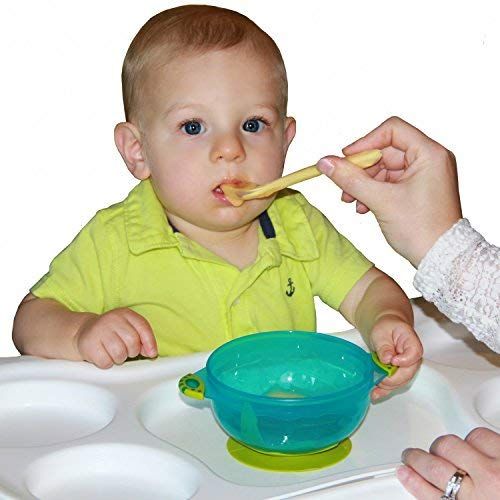 Just be distracted more often by household chores, leaving a plate (the food in it should not be hot!) And a spoon in front of the baby. At some point, a hungry child will not stand it and will take a spoon in his hands. And, of course, it will smear everything around - this is an obligatory stage of development. But the main thing is that the baby develops and learns independence. And the kitchen can be washed later.
Just be distracted more often by household chores, leaving a plate (the food in it should not be hot!) And a spoon in front of the baby. At some point, a hungry child will not stand it and will take a spoon in his hands. And, of course, it will smear everything around - this is an obligatory stage of development. But the main thing is that the baby develops and learns independence. And the kitchen can be washed later.
Baby spoon. Nutrition of a child after a year
All children are so different! And every child at one time begins to walk, talk, eat with a spoon... The main thing is not to speed up or slow down the mastery of these skills. So, wanting the child to quickly learn to eat on his own, parents can start table etiquette lessons before the baby shows interest in independent food. It may be the opposite situation - trying to avoid pogroms in the kitchen, mom and dad put everything off and put off the use of a spoon by a child. So when to teach a child to a spoon, you ask? Both situations can disrupt the development of the child and lead to the fact that the child will be dependent for a very long time.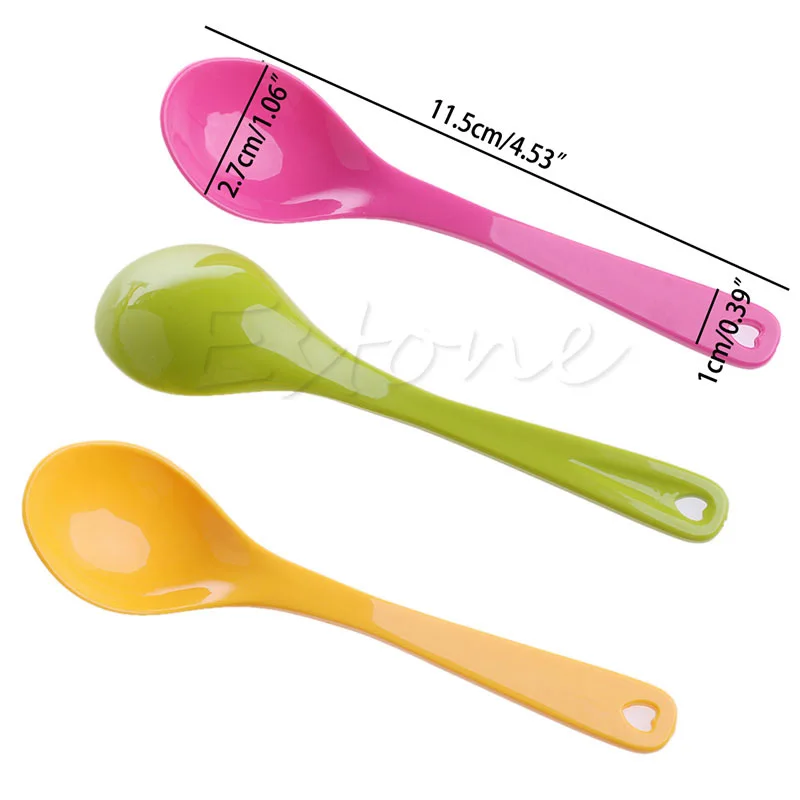 It is best to give the child a spoon when he first shows interest in it. So?
It is best to give the child a spoon when he first shows interest in it. So?
We will give you some simple tips on how to teach your child to eat with a spoon.
Make sure that the spoon is plastic - it makes less knocking on the table, and there are no sharp edges, besides, metal spoons, unlike plastic ones, can frighten the baby with their cold surface. In addition to using a spoon (not necessarily curved, children can do just fine with ordinary spoons), let the baby learn to use a plate as well - it is better if it is plastic colored dishes with a pattern on the bottom and high edges.
The food on which the baby learns to eat with a spoon should not be liquid and there should not be a lot of it in the plate - in this case it will be easier to scoop it up in a spoon, moreover, the child will have less "material" to spread around. And to teach a child to eat with a fork (children's, plastic), products that are convenient to prick on a fork are suitable - you can start with bananas, then move on to cutlets.
Before you start teaching your child to eat with a spoon, carefully choose/equip a place for the first experiments with a spoon and food - it is desirable that the walls can be washed (washable wallpaper, tiles, etc.), as well as the floor ( if there is a carpet on the floor, you need to spread an oilcloth around the children's table while feeding the child). You can also undress the baby to panties during feeding, so as not to worry about soiled clothes (undressing the baby has such a theory that, if dirty, the baby will feel uncomfortable and will try to eat more carefully next time, but in most cases this theory turns out to be far from practice).
Try not to feed the child in isolation, but, on the contrary, arrange family dinners more often, at the same time, at the beginning of training, give the child a spoon and feed him with a spoon yourself. Seeing that all family members are eating, the child tends to repeat after everyone (this rule also applies to little ones, and when the child refuses to eat from a spoon). Older children, nephews in teaching for toddlers are the best teachers.
Older children, nephews in teaching for toddlers are the best teachers.
Do not try to ensure that the child immediately takes the spoon correctly and starts eating on his own from the very first time with a spoon, this does not happen, the main thing is, in principle, to interest the child in "adult food", that is, complementary foods, and for this, let him use his hands in the plate messing around is not a sin. It should also be taken into account that the number often "passes" with children, on the contrary, do not offer anything. Those. the whole family eats with spoons, if the child refuses to eat from a spoon, the child should not be offered a spoon (in the same way, if he doesn’t want to eat some dish, everyone should eat, praise, and the child should not even be advised to try). And in this case, he will run up and take it.
Before striving to teach a child how to use a spoon, understand yourself - what is the basis of your desire? There is no strictly limited time when to accustom a child to a spoon.




